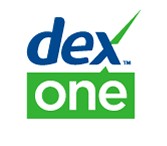
On Thursday’s earnings call, DexOne (ex-R.H. Donnelley) leaders cautiously projected that the rate of decline in ad sales would improve in 2010, from being down 20 percent in 2009 to down between 12 percent and 15 percent this year. The company made the case to financial analysts that its performance in 2009, while dire, was in line with the overall media landscape.
Most critically, DexOne leaders tried to sell the story line that it has emerged from bankruptcy as a stronger, healthier company that is well-positioned to succeed in the local marketplace. Along with other leading publishers, DexOne is offering its take on the “one stop” model where SMBs can go for a simplified solution that delivers leads from multiple channels, including a mix of proprietary and third-party sources. DexOne CEO Dave Swanson doesn’t even like to refer to the business as a Yellow Pages company, even though the core product remains the primary, if diminishing, source of revenues and leads.
“We have evolved far beyond our Yellow Pages roots,” Swanson said. “Yellow Pages is only one of seven platforms we are using today to drive leads for our customers and revenues for the company.”
For the full year 2009, DexOne posted net revenues of US$2.2 billion, down from US$2.6 billion in 2008, a 16 percent drop. Ad sales reflect the value of ads sold for books published during the year, while net revenues account for dollars amortized during the year, since directory revenues are recorded over a 12-month period to reflect the lifespan of a directory. Ad sales are generally considered a better indicator of how the business is performing.
DexOne CFO Steve Blondy, echoing other industry leaders, described the third and fourth quarters of 2009 as the “bottom” in terms of ad sales declines. Ad sales were down 21.9 percent in Q4 2009.
He added that the company is being cautious in its 2010 guidance because the small-business advertiser is not bouncing back as quickly as larger and national advertisers. And that recovery will continue to lag. “Small businesses are not participating in the recovery consistent with [advertisers in] major media.”
Some other earnings call highlights:
- Swanson described the company as following a “merchant centric strategy.” Essentially this means it is all about aggregating the kind of traffic that drives quality leads to advertisers.
- DexOne reported losing 110,000 advertisers in 2009. Blondy said about two-thirds of the loss was the result of companies going under or being locked out for credit reasons.
- Swanson reiterated the recent announcement that DexOne is aggregating Yelp reviews into its DexKnows platform. BIA/Kelsey originally reported this on the Local Media Blog on Feb. 1.
- There was some back and forth on EBITDA margins. DexOne reported a 52 percent 2009 margin, and margins are expected to decline further in 2010. Pressed on this, Blondy shot back that it is a “business decision” to invest in the customer value proposition. “We are getting a diminishing return from cost savings,” Blondy said. “We can’t save our way to success. Our focus is on growing the top line.”

This Post Has 0 Comments